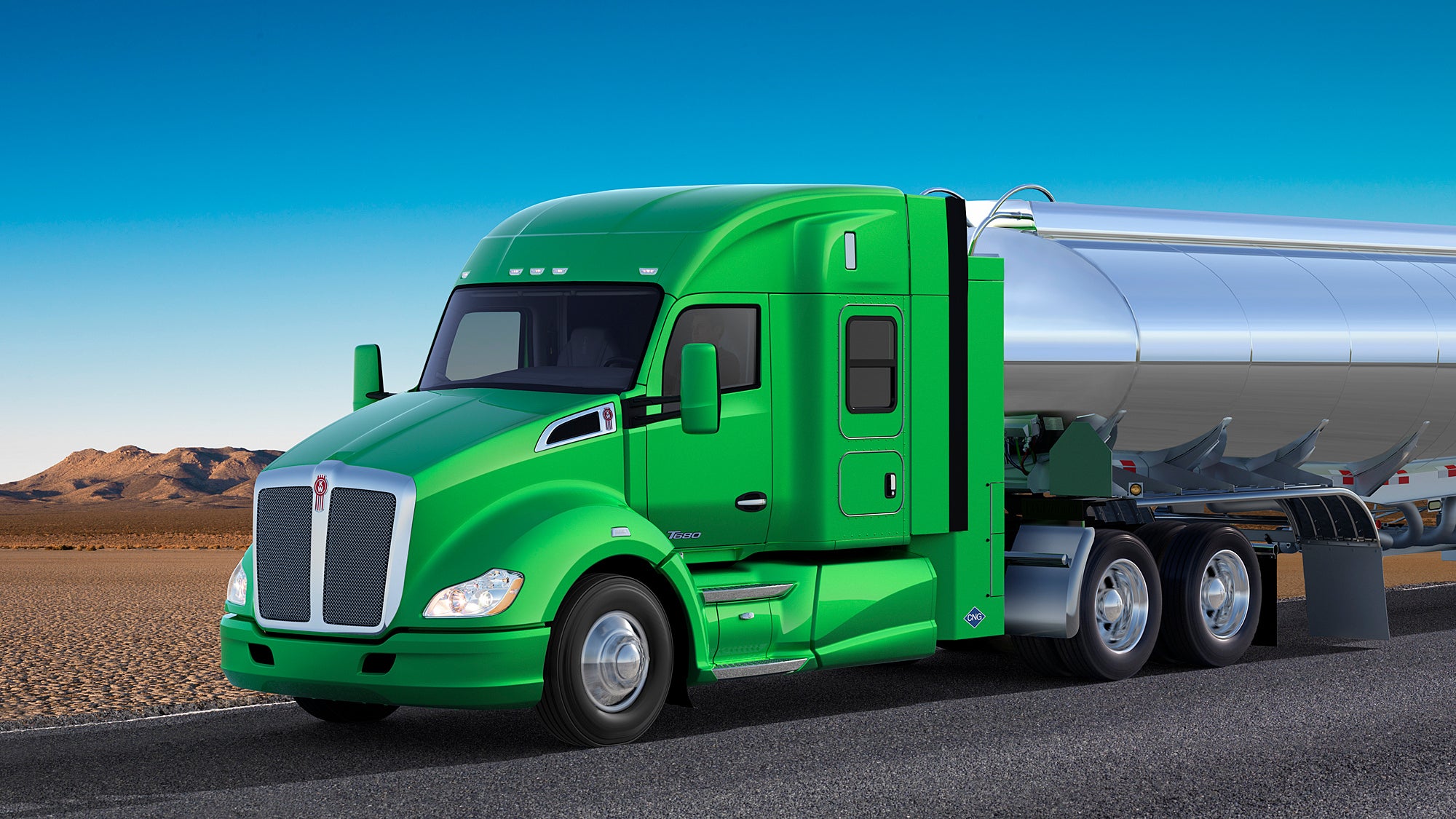 By Joe Rudek and Jason Mathers
By Joe Rudek and Jason Mathers
Many commercial fleet operators have considered switching their fleet vehicles from diesel to natural gas to take advantage of the growing abundance of natural gas and reduced emissions. Natural gas trucks have the potential to reduce nitrogen oxides emissions (NOx) from freight trucks and buses.
Yet, adopting the emission reduction technologies and practices needed to curb the methane escaping during the production, transport and delivery of natural gas is critical to unlock the full environmental potential of these vehicles. Methane, the main component of natural gas, is a potent greenhouse gas released to the atmosphere at every step from production wells to the vehicle fuel tanks. Even small amounts of methane emitted across the natural gas supply chain can undermine the climate benefit of fuel-switching vehicles to natural gas for some period of time, as EDF research has shown.
A newly published scientific study, led by researchers with West Virginia University at the Center for Alternative Fuels, Engines and Emissions, measured methane emissions from heavy-duty natural gas-powered vehicles and refueling stations, and is greatly expanding what we know about emissions from natural gas-fueled vehicles. The study is the first project in EDF’s coordinated methane research series to analyze where and by how much methane emissions occur during natural gas end uses.
The WVU study found that emissions from the vehicle tailpipe and engine crankcase were the highest methane sources, representing roughly 30 and 39% (respectively) of total pump to wheels (PTW) emissions. Fortunately, engines with closed crankcases have recently been certified by EPA, avoiding the single largest source of methane emissions from these vehicles.
Fueling station methane emissions were reported to be relatively low, representing about 12% of total PTW emissions. WVU researchers based the fueling station emission estimates on the assumption that liquefied natural gas (LNG) stations have sufficient sales volume to effectively manage boil off gases, or the fuel lost as vapors when the LNG heats above its boiling point. Without alternative methods to manage boil off gas, low sales volume risks large methane releases.
Eleven industry groups participated in the WVU study – The American Gas Association, Chart, Clean Energy, Cummins, Cummins Westport, International Council on Clean Transportation, PepsiCo, Shell, Volvo Group, Waste Management, and Westport Innovations – and provided researchers with important insights. Their active involvement and determination to go where the science led them in reducing truck methane emissions greatly strengthened the study.
Measurements from the WVU study are helping to further our understanding of the climate impact of natural gas vehicles. This paper, along with other analyses, provides both industry and policymakers new insights to target technology improvements, and identify best practices for minimizing emissions. But pairing vehicle data with lifecycle emissions of methane across the entire supply chain remains essential to fully assess how natural gas trucks perform, from a climate perspective, relative to diesel trucks.
While only about 3 percent of heavy duty trucks run on natural gas today, some analysts suggest their market share could reach as high as 50 percent over the next two decades if high oil and diesel prices return. Meanwhile, investments in natural gas-powered utility vehicles and transit buses are growing, with 11 percent of such vehicles already running on natural gas.
As interest in natural gas vehicles grows, the time to get ahead of this methane supply chain leakage problem is now, before the industry hits a major growth spurt. Reducing methane leaks upstream of the vehicles themselves will be a key determinate in whether a shift in fuels will result in a positive or negative benefit for the climate.
Image source: Flickr/TruckPR









